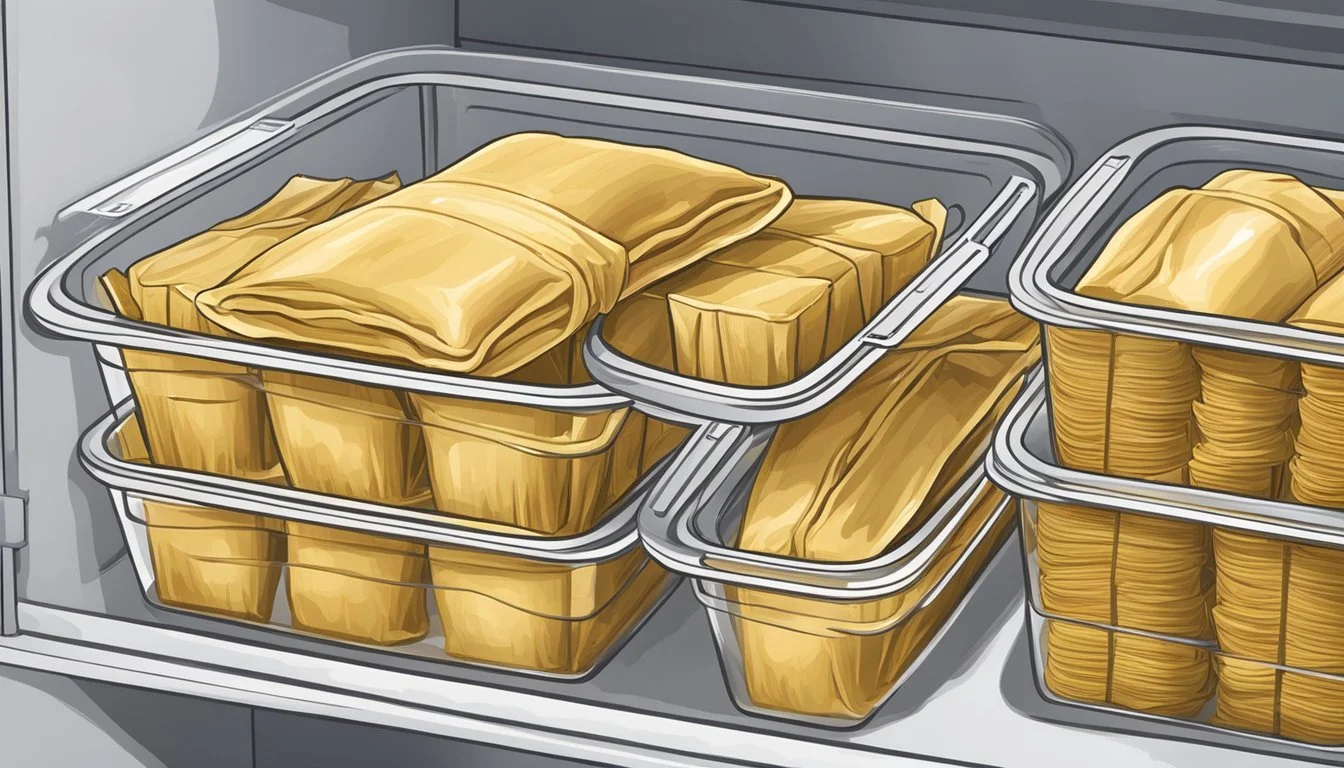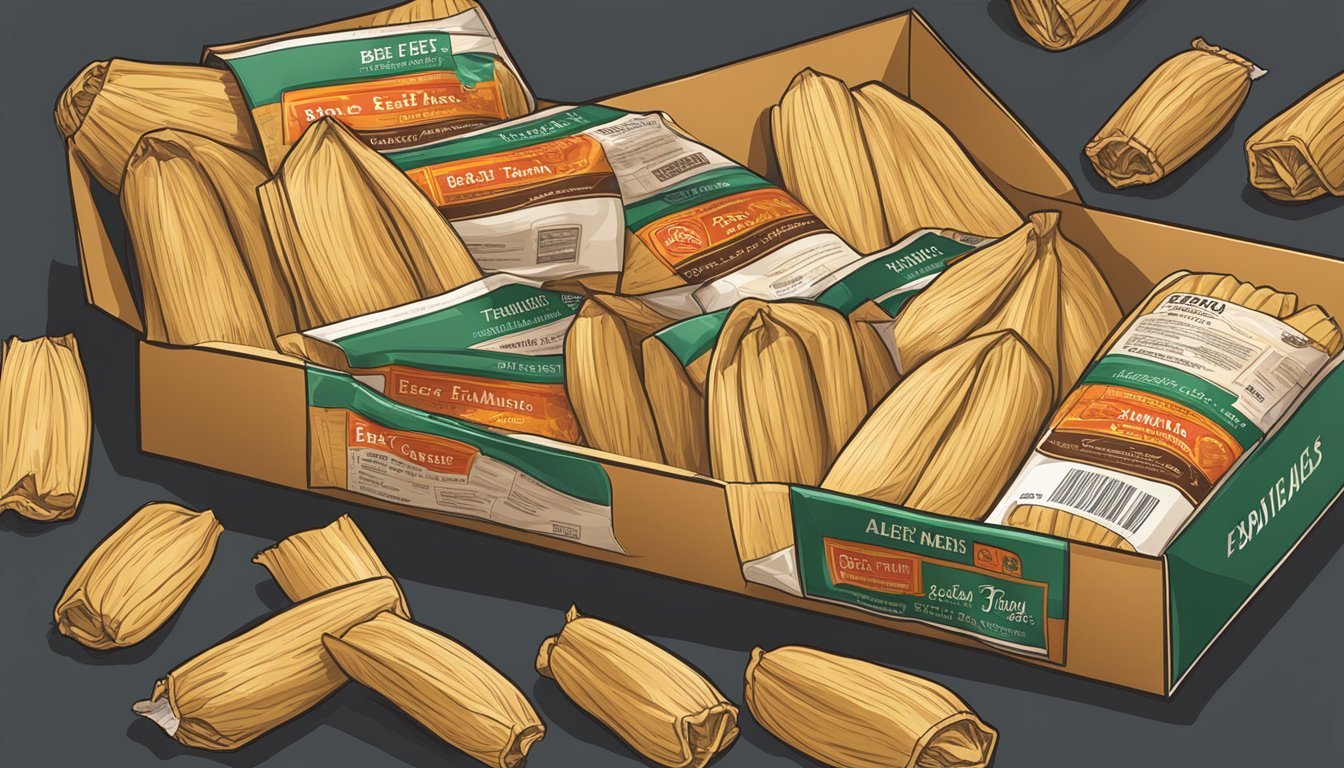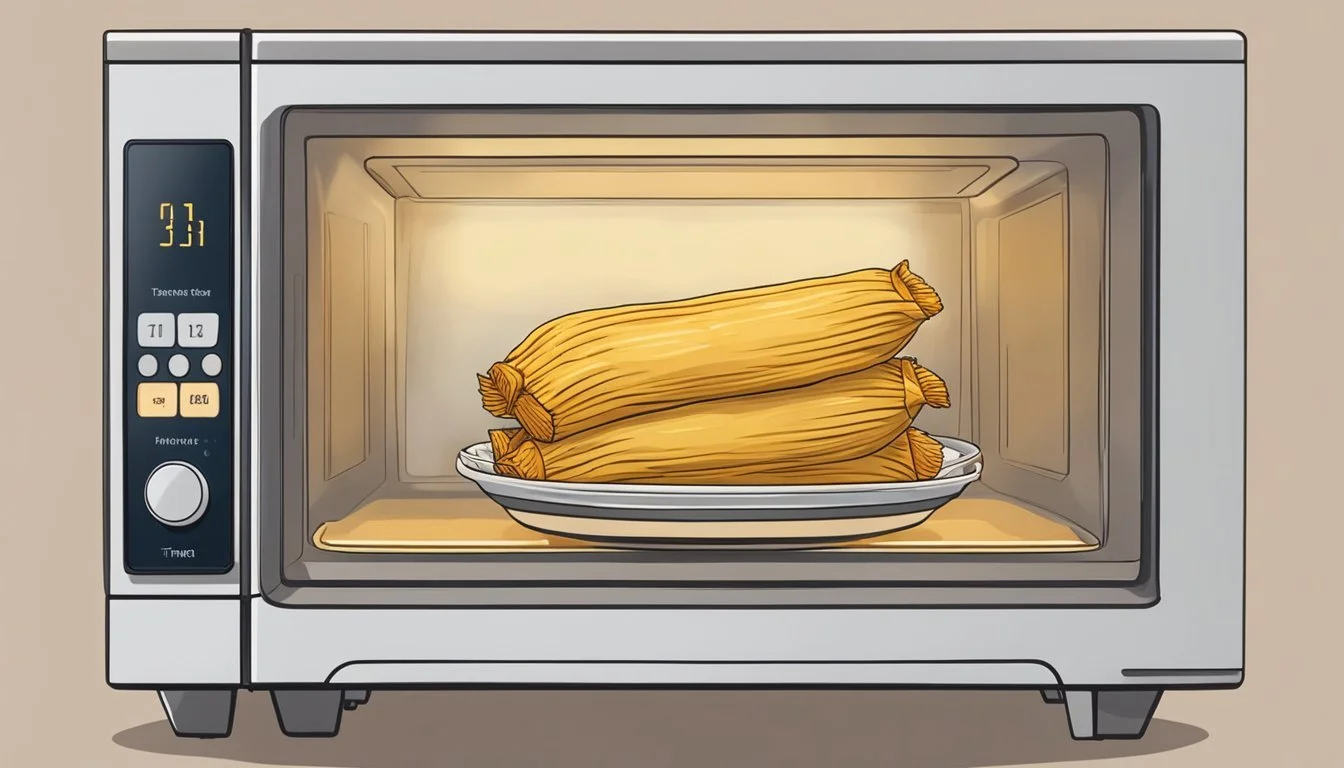How Long Do Beef Tamales Last?
Freshness and Storage Tips
Whether enjoyed fresh or preserved for later, beef tamales are a versatile and beloved dish. Cooked beef tamales can last up to 7 days in the refrigerator and if stored properly, they can be frozen for up to 6 months. This longevity makes them a convenient meal option for busy weeks or special occasions.
Proper storage is key to maintaining the quality and safety of tamales. Place them in airtight containers or sealed freezer bags to prevent moisture loss and contamination. For those looking to reheat, steaming is the best method to retain the texture and flavor, ensuring every bite is as delicious as originally intended.
Understanding how to store and reheat tamales effectively can enhance both convenience and enjoyment. When frozen and reheated correctly, tamales remain a quick and satisfying meal option, perfect for any day of the week.
Understanding Tamales
Tamales are a traditional Mexican dish enjoyed for centuries, known for their distinctive masa and various fillings wrapped in corn husks. Examining their history and ingredients provides insight into their cultural significance and culinary diversity.
Historical Significance
Tamales date back to ancient Mesoamerica, where they were a staple among the Aztecs and Mayans. These early civilizations used tamales as portable food, ideal for soldiers and travelers due to their convenient packaging. Over time, tamales spread throughout Mexico, becoming a symbol of Mexican culture and cuisine.
In contemporary Mexico, tamales are central to many celebrations, including Christmas and Día de los Muertos. Each region in Mexico has its unique variations, reflecting local traditions and ingredients. This rich history makes tamales more than just a meal; they are a link to Mexico's past and cultural identity.
Ingredients and Varieties
The primary component of tamales is masa, a dough made from nixtamalized corn. This masa forms the base, which is then filled with a variety of ingredients. Beef tamales, specifically, often feature seasoned beef shoulder roast, providing a robust flavor.
Tamale fillings can range from meats like pork, chicken, and beef to vegetarian options with beans, cheese, or chiles. Red tamales are a popular variation, made with a rich red chile sauce for added depth. The endless combination of fillings and sauces ensures that there is a tamale variety to suit every taste.
The preparation involves spreading masa on softened corn husks, adding the filling, and then steaming the tamale until cooked. This process not only enhances the flavors but also locks in moisture, resulting in a tender, flavorful dish that is a cornerstone of Mexican food.
Proper Storage Techniques
Storing tamales correctly ensures they retain their taste and texture while avoiding foodborne illnesses. Key methods include refrigeration for short-term storage and freezing for long-term preservation.
Refrigeration Method
For short-term storage, place tamales in the fridge. Allow the tamales to cool completely before refrigerating them. This prevents condensation, ensuring the tamales don't become soggy.
Wrap each tamale individually in aluminum foil or plastic wrap. Store the wrapped tamales in an airtight container or resealable plastic bag. Ensure the container or bag is tightly sealed to prevent moisture loss and bacterial contamination.
Optimal freshness can be maintained by consuming refrigerated tamales within 3 to 4 days. After this period, the risk of spoilage and bacterial growth increases significantly.
Freezing Process
For longer storage periods, freezing is the best option. Let the tamales cool to room temperature before freezing. Wrap each tamale in plastic wrap or aluminum foil to prevent freezer burn.
Place the wrapped tamales in a freezer-safe bag or airtight container. For best results, label the container with the date. This helps track the storage time.
Frozen tamales can last up to 6 months without significant loss of quality. To reheat, steam them directly from frozen, adding a few extra minutes to the steaming time. This method ensures that the tamales remain moist and flavorful.
Shelf Life
Proper storage methods can significantly extend the shelf life of beef tamales, ensuring they remain safe to eat and retain their quality. The longevity varies depending on whether they are refrigerated or frozen.
Beef Tamales in the Refrigerator
Beef tamales typically last five to seven days in the refrigerator. For optimal freshness and flavor, it is best to consume them within the first three to four days. Store the tamales in airtight containers or sealed plastic bags to prevent drying out and contamination. Make sure the temperature of the refrigerator is consistently below 40°F (4°C).
Cooked tamales generally have a slightly shorter shelf life compared to their uncooked counterparts. Nutrient-rich ingredients like beef require careful handling to avoid spoilage. If you notice any off-smells, discoloration, or changes in texture, it is safest to discard the tamales.
Beef Tamales in the Freezer
Beef tamales can be frozen to extend their shelf life up to six months. To freeze tamales effectively, wrap each tamale individually in plastic wrap or aluminum foil and then place them in a freezer bag. This method prevents freezer burn and preserves the quality of the tamales.
For cooked tamales, make sure they have cooled completely before freezing. This prevents ice crystals from forming, which can alter the texture upon reheating. Uncooked tamales, frozen immediately after preparation, maintain their flavor and texture for longer periods when stored properly. When ready to consume, thaw frozen tamales in the refrigerator before reheating to ensure even cooking.
Signs of Spoilage
Identifying spoilage in beef tamales is crucial to ensuring food safety. Key indicators include visual and olfactory clues and changes in texture, which help determine whether they should be discarded.
Visual and Olfactory Clues
Spoiled beef tamales often emit a sour or off smell, signaling bacterial growth. Mold may appear as green, white, or black spots on the surface. These visual signs indicate that the tamales are unsafe to eat and should be discarded immediately.
Additionally, any discoloration, such as graying or darkening of the meat, suggests spoilage. Bacteria thrive in moist environments, so pay attention to excess moisture or wet spots.
Texture Changes
Another indication of spoilage is a significant change in texture. Fresh tamales should have a firm but tender consistency. Spoiled tamales may feel slimy, sticky, or excessively dry.
A mushy or grainy texture often indicates bacterial activity, degrading the tamale's quality. If the beef filling has hardened or become crumbly, it is likely no longer safe to consume.
Ensuring that these texture changes are absent can help maintain the quality and safety of beef tamales.
Reheating Tamales
Reheating tamales properly ensures they stay moist and flavorful. Each method comes with its own set of instructions and benefits, whether using a microwave, oven, or steamer.
Microwave Method
For a quick and convenient method, the microwave is an excellent choice. Start by wrapping each tamale in a damp paper towel to retain moisture and prevent dryness. Place the wrapped tamales on a microwave-safe plate, ensuring they aren't touching. Microwave on high for 1-2 minutes, then check for even heating. If necessary, continue microwaving in 30-second intervals until warmed through.
If the tamales were frozen, first thaw them in the fridge overnight. This ensures even heating. Be cautious, as microwaving too long can make the tamales rubbery or dry, especially if they are wrapped too tightly. Using this method, you'll have warm, ready-to-eat tamales in minutes.
Oven Reheating
Oven reheating is reliable and can give the tamales a pleasant texture. Preheat your oven to 350°F (175°C). Wrap each tamale in several layers of aluminum foil, squeezing out any air pockets to lock in moisture. Place the tamales on a baking sheet, ensuring they are spaced evenly apart.
Bake for about 10 minutes, then flip the tamales over and continue baking for an additional 10 minutes. This method takes a bit more time than microwaving but ensures the tamales heat evenly and stay moist. For a slight crisp on the outer husk, remove the foil for the last 5 minutes of cooking. Keep an eye out to avoid overcooking.
Steaming Techniques
Steaming is perhaps the most traditional method, keeping the tamales moist and tender. Using a steamer, add water to the pot without touching the tamales. Arrange the tamales in the steamer basket, standing them upright with open ends facing up. Cover with a lid to trap the steam effectively.
Steam the tamales for around 15-20 minutes if thawed or up to 40-45 minutes if frozen. Check water levels periodically to prevent burning. This method ensures the tamales are evenly heated and preserves their original texture without drying out. Perfect for maintaining the authentic taste and feel of freshly made tamales.
Food Safety Considerations
Beef tamales require careful handling to ensure food safety. Temperature control is crucial. Cook tamales to an internal temperature of 165°F (74°C) to kill harmful bacteria.
At room temperature, tamales should not be left out for more than two hours. If left out overnight, bacterial growth can increase, making them unsafe to eat.
Containers play an essential role in preserving tamales. Store tamales in airtight containers or securely wrap them in plastic wrap to keep them fresh and prevent contamination.
In the fridge, tamales can last up to one week. Ensure they are stored properly to maintain safety and quality. Labeling containers with dates helps keep track of how long tamales have been stored.
For longer storage, tamales can be kept in the freezer for up to six months. When freezing, wrap tamales in corn husks and then in plastic wrap. This extra layer helps prevent freezer burn.
Thawing frozen tamales should be done safely in the fridge. Avoid thawing at room temperature, as this can promote bacterial growth.
When reheating tamales, make sure they reach 165°F (74°C). Proper reheating eliminates any bacteria that may have developed during storage.
Incorporating vegetables, fruits, pepper, onion, cheeses, and chilies into tamales adds flavor and variety. However, these ingredients should be fresh and stored correctly to avoid cross-contamination.
Using ingredients like salsa, filling, beef broth, and hot water should be handled with care. Ensure all utensils and surfaces are clean to maintain the highest safety standards.
Maximizing Tamales Enjoyment
To maximize the enjoyment of beef tamales, consider serving them with complementary sides and salsas, and get creative with any leftovers for a variety of meals.
Serving Suggestions
Beef tamales are traditionally enjoyed with red chile sauce which enhances their rich flavor. Pairing them with refried beans, Mexican rice, or a fresh salad can create a balanced meal.
A squirt of lime juice adds a refreshing acidity, while sliced avocado or guacamole provides a creamy texture.
Steamed tamales served on banana leaves can heighten the traditional Mexican cuisine experience. For drink pairings, horchata and agua frescas make great accompaniments to the savory flavors.
Creative Leftover Ideas
Leftover beef tamales can be transformed into exciting dishes. They can be cut into slices and fried to make tamale fritters.
Adding shredded tamale pieces to a breakfast scramble with eggs, cheese, and salsa offers a flavorful start to the day.
For a hearty soup, tamale chunks can be added to a pot with chicken broth, beans, and vegetables. This not only preserves the masa for tamales texture but also extends the enjoyment of traditional Mexican food in a new form.
Labeling and Tracking
Proper labeling and tracking are essential for maintaining the quality and safety of beef tamales during storage. Always label tamales with the date they were prepared or purchased before storing them.
When storing tamales in the refrigerator, use airtight containers or plastic wrap. Ensure the label is clear and visible.
Expected Shelf Life
Refrigerator: Up to 7 days
Freezer: Up to 6 months
When freezing tamales, label each bag or container with the date of storage to keep track of their shelf life. This helps in knowing when it's time to consume them before quality degrades.
Tracking stored tamales involves checking the labels regularly to ensure they are used within their optimal storage time.
Store beef tamales at consistent temperatures and avoid frequent temperature changes that can affect their quality.
Keeping a storage log can also be helpful. Use a simple table like the one below to monitor:
Date Stored Item Storage Method Expiration Date 2024-06-01 Beef Tamales Refrigerator 2024-06-08 2024-06-01 Beef Tamales Freezer 2024-12-01
By following these practices, it becomes easier to manage and enjoy tamales while ensuring they remain safe and delicious.










